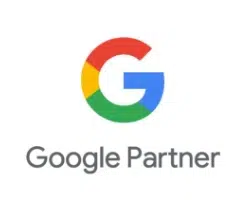In the ever-evolving world of digital marketing, businesses are constantly seeking effective strategies to enhance their online visibility, attract targeted traffic, and maximize conversions. Two popular approaches that often come up in discussions are Search Engine Optimization (SEO) and Pay-Per-Click (PPC) campaigns. While some may perceive these tactics as competitors, pitting them against each other is not only unnecessary but also counterproductive. In reality, SEO and PPC can & should work together synergistically, leveraging their respective strengths to drive better results. In this comprehensive guide, we will explore how SEO and PPC complement each other and why prioritizing their combined efforts can lead to optimal business outcomes.
The Relationship Between SEO and PPC:
To begin understanding the relationship between SEO and PPC, it’s important to grasp their fundamental concepts. SEO involves optimizing a website’s content, structure, and overall online presence to rank organically in search engine results pages (SERPs) for relevant keywords. On the other hand, PPC refers to paid advertising campaigns, where businesses bid on specific keywords and pay when users click on their ads. While SEO focuses on long-term visibility, PPC provides immediate visibility and traffic. By combining these approaches, businesses can benefit from the strengths of both strategies.
The Time Factor: SEO Takes Time, Paid Search Does Not:
One key distinction between SEO and PPC is the time it takes to see results. PPC campaigns can be activated instantly, generating traffic and visibility as soon as the ads are launched. In contrast, SEO is a long-term endeavor that requires patience and continuous effort. It typically takes several months to observe significant results from SEO initiatives. Therefore, by prioritizing PPC in the initial stages, businesses can drive immediate traffic while waiting for their SEO efforts to gain traction. This combination allows for a balanced approach to maximize visibility and conversions.
The Power of PPC and SEO: 11 Key Advantages for Business Success
When it comes to driving online visibility and achieving business success, the combined power of PPC (Pay-Per-Click) and SEO (Search Engine Optimization) is unmatched. These two digital marketing strategies offer unique advantages that, when leveraged effectively, can take your business to new heights. While this list is not exhaustive, it covers the top 11 advantages of incorporating PPC and SEO into your marketing efforts.
1. Enhanced Visibility: By implementing SEO techniques, your website can organically rank higher in search engine results pages (SERPs), leading to increased visibility among your target audience. Additionally, PPC allows you to create highly targeted ads that appear prominently in search results, further boosting your online visibility and driving more traffic to your website.
2. Increased Website Traffic: Both PPC and SEO are designed to drive traffic to your website. SEO focuses on improving your website’s organic rankings, attracting users who are actively searching for relevant keywords. On the other hand, PPC enables you to display targeted ads to users based on their search queries, directing them to specific landing pages on your website. By utilizing both strategies, you can generate a steady stream of quality traffic.
3. Better Audience Targeting: PPC offers advanced targeting options, allowing you to reach specific demographics, locations, and even interests. This level of precision ensures that your ads are shown to the most relevant audience, maximizing the chances of conversion. SEO, on the other hand, helps attract organic traffic from users actively searching for products or services related to your business, resulting in highly targeted visitors.
4. Immediate Results with PPC Aligned with SEO: One of the notable advantages of PPC is its ability to deliver immediate results. Once your PPC campaign is activated, your ads can rapidly appear in search results, effectively driving traffic and potential customers to your website. This can prove highly advantageous, particularly when you have new product launches, time-sensitive promotions, or an urgent need to enhance your online presence. However, it is crucial to recognize that relying solely on PPC for your website’s visibility and long-term marketing objectives is not sufficient. It is essential to have well-established SEO initiatives in place to lay the foundation for long-term branding, positioning, and traffic acquisition. By integrating PPC and SEO strategies, you can leverage the immediate results of PPC while simultaneously working consistently towards your long-term SEO objectives. This approach ensures a balanced and comprehensive marketing strategy that combines the immediate benefits of PPC with the enduring advantages of SEO.
5. Improved Conversion Optimization: Conversion optimization (lead gen, purchases, phone calls, etc.) is a crucial aspect of digital marketing, and the combination of SEO and PPC can greatly contribute to improving the effectiveness of your conversion paths. PPC campaigns offer valuable insights and immediate feedback on the performance of your landing pages and conversion funnels. By analyzing the conversion data generated through PPC, you gain valuable information about user behavior, preferences, and engagement levels.
One of the significant advantages of PPC campaigns is the ability to track and measure conversions accurately. Through conversion tracking tools and analytics, you can identify which keywords, ads, or campaigns are driving the most conversions. This data provides valuable insights into the effectiveness of your landing pages and the user experience you offer.
By leveraging this conversion data, you can identify areas for improvement and optimize your website’s user experience. For example, if you notice a high bounce rate on a particular landing page, you can analyze the page’s design, messaging, and call-to-action elements to identify potential areas of friction. You can then make informed adjustments to enhance the page’s layout, content, or navigation, making it more compelling and user-friendly.
6. Improved Data Driven Marketing Decisions: The insights gained from PPC campaigns can also guide your decision-making process when it comes to your organic traffic. By applying the lessons & insights learned from conversion data analysis, you can refine your website’s user journey, making it more seamless, intuitive, and optimized for conversions. This can involve streamlining the navigation, simplifying the checkout process, improving the clarity of your value proposition, or enhancing the overall user interface.
Furthermore, the knowledge gained from conversion optimization efforts can be utilized to create personalized and targeted experiences for your organic traffic. By understanding the preferences and behaviors of your PPC-driven audience, you can implement similar strategies to enhance the experience of your organic visitors. This may include tailoring your content, optimizing your landing pages, and delivering relevant messaging to engage and convert your organic traffic effectively.
The synergy between PPC and SEO in terms of conversion optimization is clear. PPC campaigns act as a testing ground, providing immediate feedback and insights that can be applied to improve the performance of your website and conversion paths. By continuously monitoring and analyzing conversion data, you can refine your strategies, eliminate bottlenecks, and create a seamless user experience that drives conversions for both your PPC and organic traffic.
7. Keyword Research, Expansion and Optimization: Keyword research is a fundamental aspect of both SEO and PPC. While SEO campaigns can uncover valuable long-tail search terms that drive conversions, PPC provides valuable insights through the Search Query Report. By combining these findings, businesses can expand their keyword lists for both SEO and PPC, creating a comprehensive strategy that targets relevant terms across multiple channels. This integrated approach allows for better optimization of SEO content and PPC ad copy, resulting in increased visibility and higher conversion rates.
8. SEO’s Direct Influence on PPC Quality Score: Quality Score is a crucial factor in determining the effectiveness and cost of PPC campaigns. It considers various factors, including ad relevance, click-through rate (CTR), landing page experience, and more. By optimizing landing pages for SEO, businesses can improve their Quality Scores and achieve higher ad rankings while paying less for their positions. Aligning landing page content with ad copy and relevant keywords enhances the overall user experience, leading to improved Quality Scores and reduced PPC costs.
9. Expanding Search Real Estate: Maximizing Visibility and Brand Recognition: When it comes to digital marketing, occupying prime search real estate is crucial for businesses looking to enhance their online visibility and reach a wider audience. By combining SEO and PPC strategies, businesses can effectively expand their presence in search engine results pages (SERPs) and maximize their visibility, much like owning multiple properties on Google’s network.
Just as owning a plot of land allows you to build a home and increase your physical presence, occupying search real estate through SEO and PPC enables you to establish a strong digital presence and capture the attention of potential customers. The most coveted real estate in the digital world is the first page of Google’s search results, as it receives the majority of user clicks and generates the highest business visibility.
Furthermore, expanding your search real estate through SEO and PPC allows you to reach a broader audience. While organic rankings primarily target users actively searching for specific keywords, PPC campaigns enable you to target a wider range of users, including those in the awareness and consideration stages of the buyer’s journey. This comprehensive approach ensures that you capture the attention of potential customers at various touchpoints, increasing the chances of converting them into paying customers.
10. Organic Branding and Targeting Competitors: A well-executed SEO strategy often leads to a website ranking organically for its branded keywords. This means that when users search for your brand name or related terms, your website appears prominently in the organic listings. This organic visibility helps reinforce brand recognition and establishes trust with potential customers.
However, targeting competitor keywords through PPC campaigns is another effective way to expand your search real estate. By bidding on relevant keywords related to your competitors’ brands or products, you can capture additional traffic and attract users who are searching for alternatives. This allows you to position your business as a viable choice when users are considering options beyond your competitors.
11. Protecting Your Brand Presence: On the flip side, if your competitors are bidding on your branded keywords, it’s crucial to include them in your own PPC campaigns. This ensures that your website maintains a prominent presence in search results, even when users specifically search for your brand name. By occupying this valuable real estate, you safeguard your brand’s visibility, prevent potential customers from being diverted to competitors, and maintain control over the messaging and user experience they encounter.
A Dual Approach for Maximum Marketing Impact
By combining SEO and PPC, businesses can achieve a dual approach that maximizes visibility and brand recognition. When users see your brand consistently appearing in both the organic and paid results, it creates a sense of authority and trust. This repeated exposure reinforces your brand’s presence in users’ minds, increasing the likelihood of engagement, conversions, and customer loyalty.
Expanding search real estate through the combined power of SEO and PPC is a winning strategy in the dynamic world of digital marketing. SEO establishes your business’s organic foundation, while PPC serves as a catalyst for exponential growth. By leveraging the strengths of both strategies, you can maximize your visibility, improve brand recognition, capture the attention of potential customers, and drive targeted traffic to your website. Embracing this holistic approach will enable you to unlock the full potential of your online presence and propel your business towards long-term success in an ever-evolving digital landscape.










